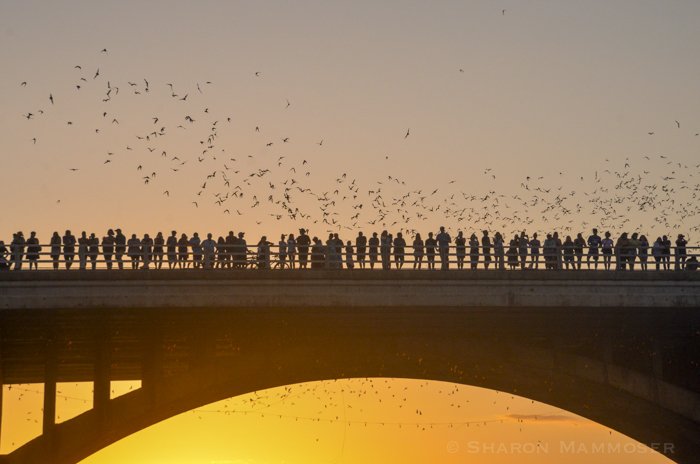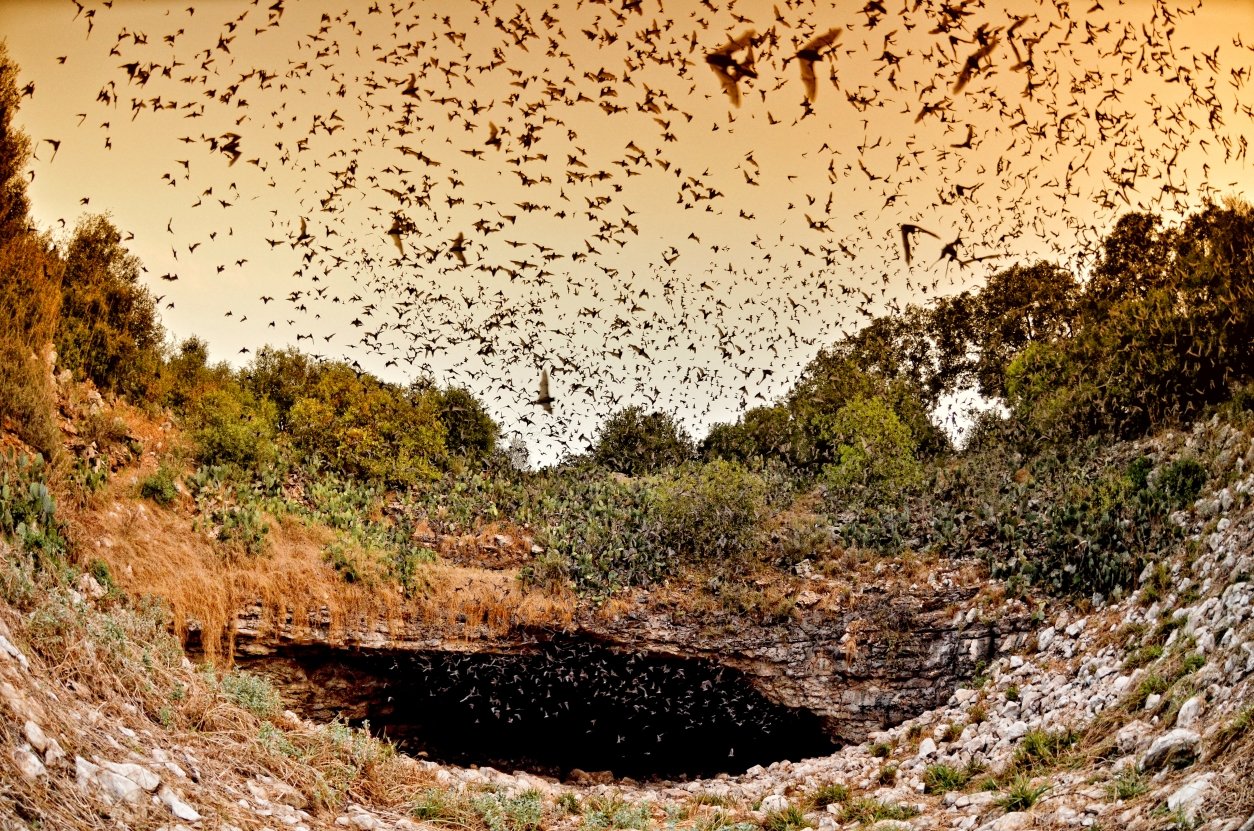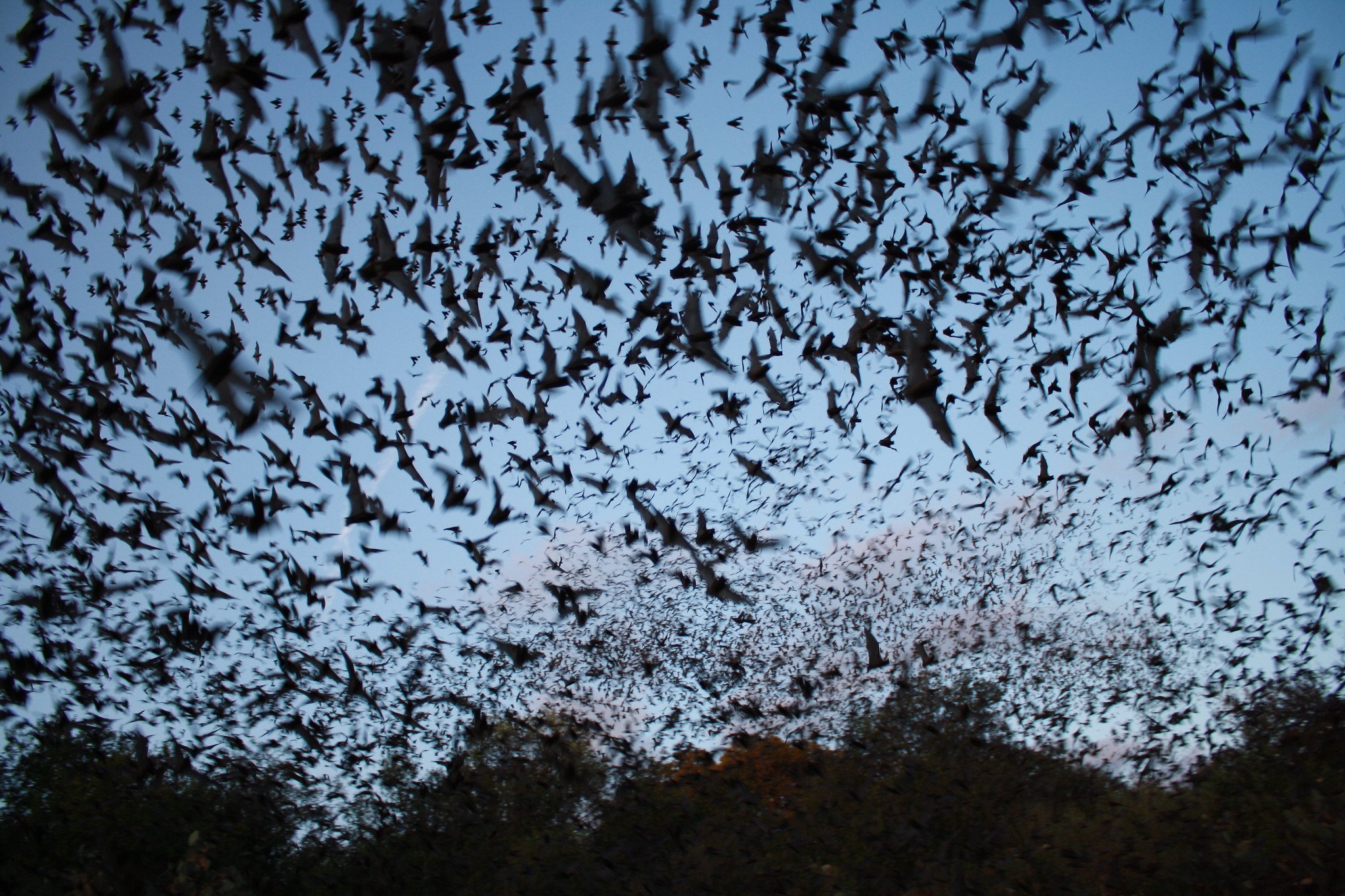Strange Nature | Batnado
Every year, from May to September, as the sun sets and the skies turn to dusk in the Hill Country of Texas, you can see a strange, beautiful sight. A tornado. Same place, same time, every day. Sometimes lasting 5-6 hours. There’s no freight train rumble that we often hear associated with tornadoes. In fact, you’re listening to it right now.
It might be windy, but also, maybe not. The skies can be perfectly clear. And it’s HUGE. In 1974, expert Leonard Ireland said that the resulting cloud could reach up to 30 miles long and 20 miles wide. But this twister, which appears like clockwork out of a crescent shaped sinkhole called Bracken Cave, doesn’t destroy anything. Unless of course, you count the population of crop-killing corn earworm moths. Those get decimated. Because this tornado - it’s made of bats. Millions and millions of bats.
The bats in Bracken Cave - they aren’t the most famous bats in Texas. In 1980, a renovation to the Ann W. Richards Congress Avenue bridge in the heart of downtown Austin accidentally turned the bridge into an excellent bat habitat. And well, people freaked out. Dracula. Blood-thirsty creatures of the night. All that.
"Bats Sink Teeth Into City," read the newspaper headlines. "Mass Fear in the Air as Bats Invade Austin!” Petitions circulated in an effort to eradicate this new leathery-winged threat.
But across the country in Wisconsin, bat researcher Merlin Tuttle heard about the possible extermination of the Congress Avenue Bridge Bats, quit his job as Curator of Mammals at the Public Museum of Milwaukee, and moved to Austin with the mission of educating the public about the usefulness of bats. It didn’t go so well at first - public hysteria isn’t easily controlled through factual information - but through a tireless campaign talking to news outlets and schoolchildren, explaining to farmers that bats were saving their crops for pests, and pointing out to city officials that the Congress Avenue Bats could be a gold mine of a tourist attraction, Austin came around. Money talks. Loud.
Bat flights at the Batten Caves. (source: batcon.org)
These days, Austin hosts Batfest every August and proudly proclaims itself the Bat Capital of the World. Where they once brought in mass fear, those bats now bring in over $10 million dollars in tourism each summer.
And these Congress Avenue Bats - they’re more famous than the Bracken Cave bats. I mean, it’s Austin. Everything cool starts in, stops in, or goes through Austin at some point. They are the largest urban colony of bats on earth, so their fame isn’t unwarranted. And it’s a LOT of bats. 1.5 million of them, living in the crevices on the underside of the bridge. So when they emerge, they are certainly a spectacle worth seeing.
The untold story of Merlin Tuttle (video)
But Bracken Cave, about 40 miles from San Antonio, is home to the largest colony of bats in the world. Actually, it’s even been called the largest concentration of mammals. Somewhere around 20 million Mexican Free-Tailed Bats call the cave home.
You heard that right. 20 million - give or take a few - it’s tough to count.
They eat over 100 tons of insects each night, including many that are harmful to local agriculture. Area farmers save millions of dollars in what would otherwise be lost crops.
And just like their urban cousins to the North, the Congress Avenue Bats, this colony has another special aspect. It’s a maternity colony. Bat moms. 10 million of them. The males all roost elsewhere in small bat-chelor colonies.
Every June, each bat mom gives birth to a single pup, effectively doubling the size of the colony. While mom goes out in search of food, the pups are left in cute little crawling piles on the cave ceiling - as many as 400 baby bats per square foot. Scientists used to believe that when mother bats returned from the nightly hunt, they would just find any baby to nurse, but more recently, remote cameras have captured something incredible. In a crowd of 10 million pups who seem to move around at random, the moms, through sound and smell, will find THEIR baby. A small percentage of the time, a pup will sense a passing mom and want to nurse, and that mom usually allows it - but the vast majority of the time, there’s a daily sunrise reunion of mother and pup.
And late in the season the babies learn to fly - up to nearly 60mph with a tailwind. 20 million mothers and pups fly out of Bracken Cave every night, forming an enormous counterclockwise swirling, whirling batnado, and then just in time for halloween, head south to Mexico. It is their month after all.
They deserve a vacation.







